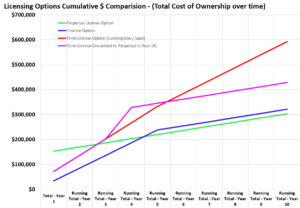Why do you need a monitoring system?
Why do you need a monitoring system? The most obvious and usually the initial reason is real-time visibility and utilization measurement. That is what most of the monitoring systems espouse doing. Let me qualify the statement. In the most basic configuration with machine-only reporting, the results are long and /or frequent IDLE conditions. Basic utilization as a percentage and real-time “uptime/downtime” visuals. This approach falls short because there is no easy identification of the root cause of IDLE events. Furthermore, the possibility of serious false-positive events is likely because circumstances or conditions, if tracked, would likely identify scheduled breaks, meetings, setup time, change-over, material conveyance, missing personnel, etc. These lightweight and cheap monitoring systems are simple to employ but lose value once running for a while. Furthermore, most are in the cloud, introducing latency and data security issues. The next level of monitoring supports an operator interface for interaction with the system. Most interfaces allow for an operator to classify an unknown downtime event. This adds granularity to downtime to better assist in root cause analysis. However, such a feature available across the host of monitoring packages has no consistency of options. Whereas some have a set or a limited number of reason codes, others are extremely flexible in providing custom reason selection for each machine to match the operation type. Issues arising on a laser are far different than issues arising with welding or on a press or multi-spindle CNC. Other more sophisticated HMIs provide advanced features such as ticket generation, checklists, work instructions, operator-guided e-alerts, operational triggers, barcode support, history editor, real-time commenting, etc. (MERLIN). Then the ability to manage jobs or OpSteps further separates the field. Recording activity against a job or OpStep is critical for any facility, especially for Job shops, mould shops, prototyping shops, or high-value, low-volume shops. If a shop collects shift utilization without job information, it is unlikely that job and shop-related events are correctly recorded and classified as negatively impacting utilization. Adding jobs or OpSteps into the monitoring system introduces the performance metric, which is key to throughput measurement. Just because a shop minimizes downtime doesn’t automatically improve all aspects of the operation. How fast a machine runs and whether it’s producing quality parts is just as essential. Does the system employed support true OEE based on product standards, cut time and material conveyance time rather than just “Cycle” time? Does the system employed provide for both good parts and reject part categorization? Does the system employed support operator login and logout, non-machine-related activity, and operator-centric metrics? This level of event collection is not found in cheaper, low-end products. Ultimately, the system should be more of an operations management system that leverages custom event types, such as machine overrides, follow-on automation and robotics, and inferred machine events, such as starved or blocked. It should employ triggers to infer conditions, manage output, alert teams, send or retrieve data from other systems, and be future-proofed to expand its function, features and integration across the enterprise. Finally, a system must be easy to roll out. Simple to connect assets, flexible enough to represent information unique to the operation. It must provide tools for production, management, supervision, engineering, Quality Control, and the operator on the floor. The latest recommendation from cyber-security firms is that such systems should reside within the organization’s four walls and not expose the company or its data in the cloud.
The emerging consensus is that entry-level, SaaS-based monitoring systems need more flexible, accurate, and resolution tools for operational issues. A good operations management system connects the floor quickly and effectively. It provides an accurate real-time data flow to the corporate monolithic enterprise tools through real-time subscription to integrated OPC UA servers. Such a system is the perfect production tool and middleware for an organization.
You do not want to be the person who selected a solution based on price or perceived ease of use. As discussed, these usually fail to address an organization’s issues. Nor do you want to be the person who followed the market speak and bought into a large toolkit approach which requires 5x services, custom programmers and months of integration to produce even the simplest of feature sets. Nor do you want to be the author of a skunkworks internal development that drains resources while recreating the wheel for the nth time, only to once again be orphaned as resources move on.
MERLIN Tempus can deliver all of the features and functions described. It can be rolled out with a fixed-price project with rapid deliverables. It can connect to ANY machine or operation. MERLIN can save stalled or failed projects from monolithic systems by providing simple connectivity to all machines and operations and serving them up to the enterprise system.
Ultimately, you are the one who can articulate what your expectations are for any system. But any system worth considering must provide information for the following:
- Accurate costing for estimates (SETUP, change over and material conveyance deviations)
- Meeting delivery dates (Utilization vs Capacity)
- Monitoring key operations critical to the delivery of the product (Real-time events, inferred events, WIP)
- Coordinating critical equipment to meet manufacturing deliverables (Machine availability, Human resource availability)
- Continuous Improvement (Root cause analysis, A3 reporting, ticketing, CI tracking tools)
- Quality Improvement and traceability (Red Tag part tracking and disposition, Reject grading and classification)
- Maintenance (Accumulative runtime reporting, custom event threshold reporting, maintenance ticketing and event scheduling)
If you keep these points in mind, you will not stray from an excellent Manufacturing Operations Management system (MOMs)




